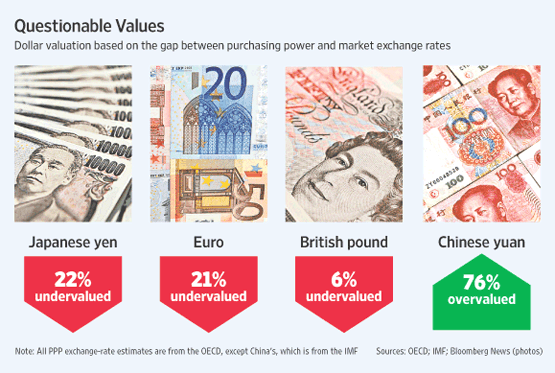I deliberately concluded my last post (US Dollar: Same Old Story) on a somewhat ambiguous note; even though though the deck is stacked against the Dollar, its 14% decline in 2009 has left it perilously close to record lows, and traders are nervous about pushing the limits further.

On the one hand, everyone believes that the Dollar is fundamentally still in a weak position. The US balance of trade remains deep in deficit. Government spending has exploded, with record-setting deficits and an expansion in the national debt. Interest rates are at rock bottom, and are by some measures, the lowest in the world. Despite signs of life, the economy remains mired in recession. The money supply has also expanding, to the extent that some long-term investors are wondering out loud about the possibility of future inflation.
As a result, the decline in the Dollar since last spring has suffered very few blips, with volatility declining at the same pace as the currency, itself. “There seems to be a paradigm shift underway where more and more foreign investors are becoming concerned that the long-term path of the dollar is downward,” summarized one analyst. The consensus among investors is almost eerie. “Speculators betting that the dollar index will fall outnumber those betting that it will rise by nearly 2 to 1, according to the Commodity Futures Trading Commission.”
Some (mainstream) analysts have even begun to open consider the possibility of a crash in the Dollar, a view that had previously been relegated to conspiracy theorists and doomsday scenarists. “In a run on the dollar, that thinking would create a cascade — fearful global investors would shy away from dollars, expecting further steep declines, creating a self-fulfilling prophesy.” Adds a former Chief Economist of the IMF, “Every time the dollar starts depreciating there is angst and everybody starts raising the question what happens if there is a collapse.” While the majority of Dollar-watchers still believe that a Dollar crash is unlikely, the point is that they are now discussing it actively.
Despite the fact that all of these factors are already in place, the Dollar remains relatively buoyant. Personally, I think this is because investors don’t really want to acknowledge that this is a real possibility. For one thing, the alternatives aren’t any better. While forex investors in recent years have enjoyed ganging up on the Dollar, the fact remains the fundamentals for the other major currencies remain just as weak. For example, a model of purchasing power parity developed by “the Organization for Economic Cooperation and Development finds the dollar is worth roughly 0.85 euro, compared with its market valuation of 0.67 euro, suggesting that the euro is 21% overvalued.” Likewise, the Yen is held to be 22% undervalued.

As a result, the market as a whole is having trouble pushing the boundaries. The Dollar has approached the psychologically important level of $1.50/Euro on several occasions, but has retreated each time. “People are wondering whether we’re going back to $1.46 in euro/dollar or heading toward $1.54. But one thing is for sure, as we head toward $1.50, we’re going to experience a lot of volatility,” summarized one analyst.
“Risk reversals, a measure of currency sentiment in the options market derived by looking at the difference in implied volatility between out of the money calls and out of the money puts, show a bias for euro puts, trading at a mid-market level of 0.2. That means investors are hedging their short dollar positions with bets for a euro downside even though no one expects the euro to fall.” Meanwhile, volatility has edged up slightly, reflecting an increased level of uncertainty surround the near-term direction of the Dollar. It could be the case that if the Euro breaks through $1.50, heartened investors will send the currency up even higher, while a failure to break


